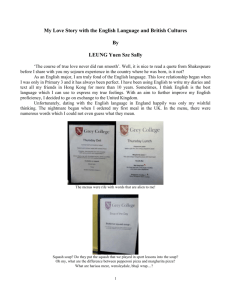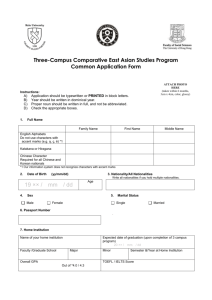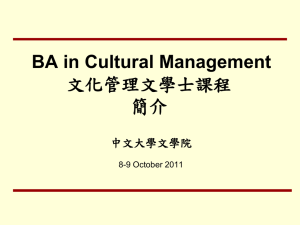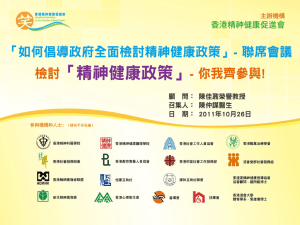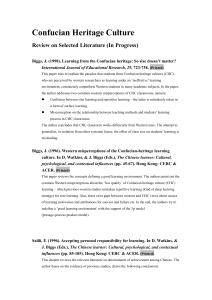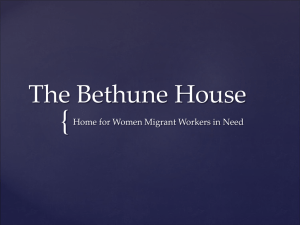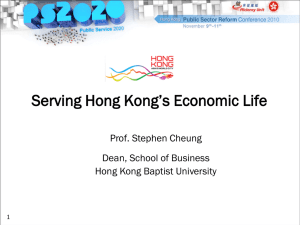Chapter 5 powerpoint
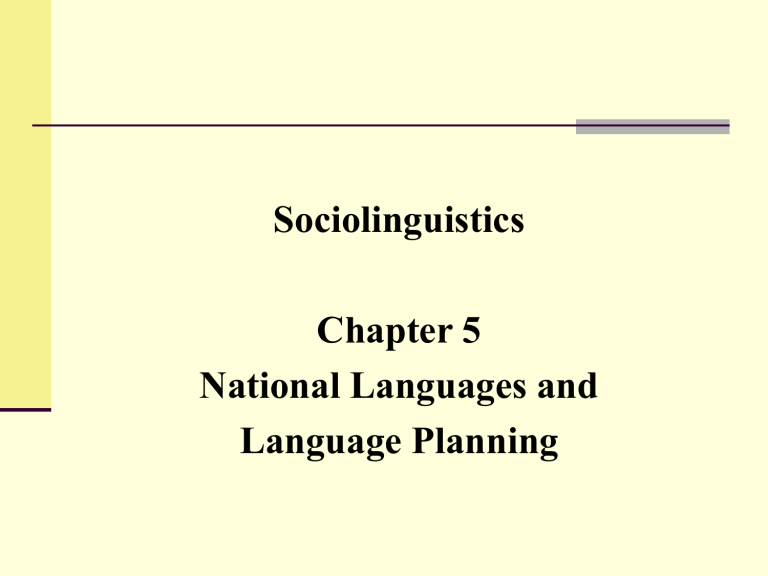
Sociolinguistics
Chapter 5
National Languages and
Language Planning
Learning Objectives
National and official languages
Planning for a national official language
The linguist’s role in language planning
National Language
A national language is the language of a political, cultural and social unit. It is used to identify the nation and unite the people of the nation.
Example 1
Guaran í in Paraguay
Exercise 1
Official Language
An official language is simply a language which may be used for government business.
Its function is primarily characterised by usefulness rather than symbolic sense.
Example 2
Bislama in Vanuatu
Official status and minority languages
English often shares official status with an indigenous language:
Malay in Malaysia
Swahili in Tanzania
Example 3
What price a national language?
Many countries regarded the development of a single national language as a way of symbolising the unity of a nation.
Planning for a National Official Language
Selection
Codification
Elaboration
Acceptance
Language Planning in Different Countries
Lingua franca as a national official language e.g. Tanzania
Exercise 4
A “H” and a new standard form based on “Ls” as two competing official languages e.g. Norway
Exercise 7
Several national languages and official languages e.g. India
The linguist’s role in language planning
Codification of orthography
Developing vocabulary
Acceptance
Acquisition planning
Exercise 9
Language Planning in Hong Kong
Historical and political development
Economic development
The impact of historical, political, and economic development on the language situation in Hong
Kong
Ordinances on official languages in Hong Kong
Definition problems
The national language
Language policy
Historical and Political Development
1840-1842 First Opium War
1856-1858 Second Opium War
1898 The New Territories and the outlying islands were leased to Britain for 99 years
1997 China resumed sovereignty in Hong
Kong
1841
Economic Development
Fishing port
1945-1950s Entrepôt
1960s-1970s Manufacturing hub
1980s-present International financial centre
NyLonKong
Impact on the language situation
The existence of English alongside Chinese, even after China resumed sovereignty in
Hong Kong
Ordinances on official languages
1. The Official Languages Ordinance (1974)
2. The Official Languages Ordinance amendment (1987)
3. The Basic Law (1997)
The Official Languages Ordinance
(1974)
The official languages possess equal status and, subject to the provisions of this
Ordinance, enjoy equality of use for the purposes of communication between the
Government or any public officer and members of the public and for court proceedings.
(Chapter 5, Section 3)
The Basic Law (1997)
In addition to the Chinese language, English may also be used as an official by the executive authorities, legislature and judiciary of the Hong Kong Special Administrative
Region.
(Chapter 1 Article 9)
Definition problems
The variant(s) of spoken and written Chinese are not defined in the legal documents.
Chinese in Hong Kong
Modern
Standard
Chinese
Written
Modern
Standard
Chinese
Cantonese
Written
Cantonese
Putonghua
Spoken
Cantonese
Modern Standard Chinese
Putonghua
PU-TONG
普通 common
HUA
話 language
The National Language
The concept of ‘national language’ was vague to Hong Kong people during the colonial period.
In the post-colonial period, the Hong Kong government starts to promote the national language – Putonghua.
Language Policy
Official
Languages
Chinese
English
Putonghua
Cantonese
English
Biliteracy
All children studying at local governmentaided schools learn both Chinese and English from Primary 1 for 12 years through the end of senior secondary education.
Trilingualism
Proportion of the population able to speak
English as another language
Year
1991
1996
2001
2006
2011
Percentage
29.4%
34.9%
39.8%
41.9%
42.6%
Source: Census and Statistics Department, Hong Kong Government
Trilingualism
Proportion of the population able to speak
Putonghua as another language
Year
1991
1996
2001
2006
2011
Percentage
16.9%
24.2%
33.3%
39.2%
46.5%
Source: Census and Statistics Department, Hong Kong Government


